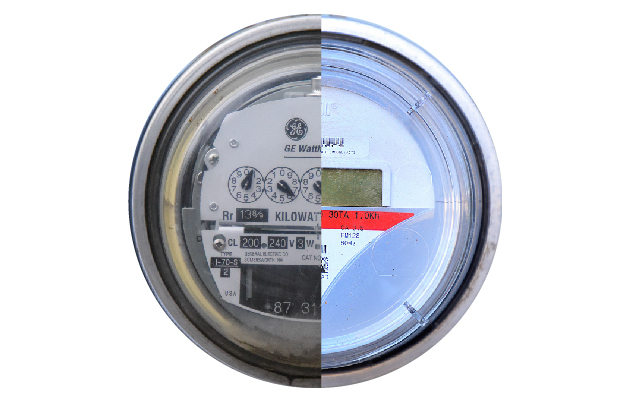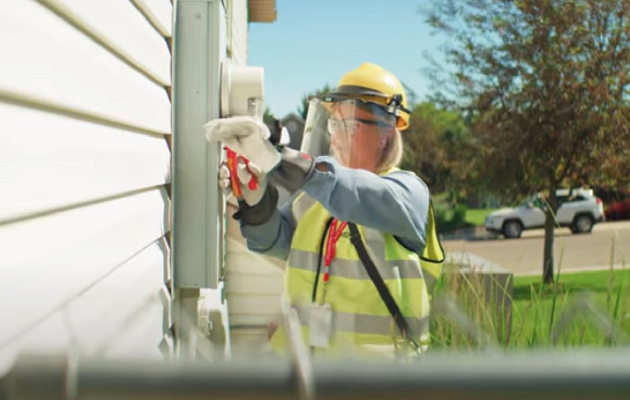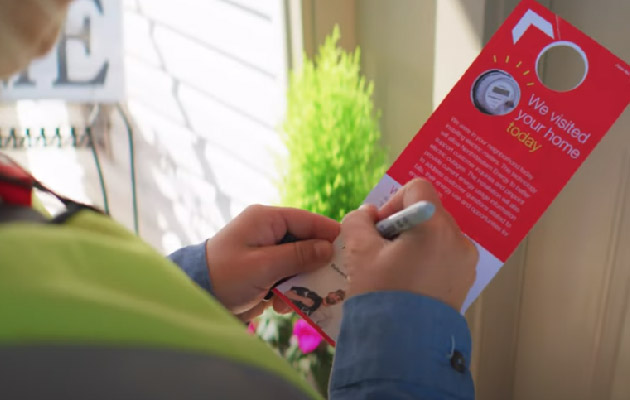Montana Meter Upgrade
NorthWestern Energy will install 590,000 new electric meters and gas modules in Montana.
- This technology upgrade will allow two-way communication between NorthWestern Energy and its meters on customer homes and businesses.
- In most cases, the system will notify NorthWestern Energy of an outage.
- Crews can restore service faster.
- Current energy use information is available for customer questions about bills, energy use and opportunities for energy savings
- System voltage information identifies problems before those problems cause outages.
Montana Digital Meter Upgrade
Moving Toward a Sustainable Energy Future

Moving Toward a Sustainable Energy Future
Advanced Meter FAQs
What is the advanced meter project timeline in Montana?
NorthWestern Energy began installation in Montana in 2021. Here is a list of approximate dates for the Montana Meter Upgrade project by area:
• Missoula Division: completed August 2022
• Butte Division: completed June 2022
• Bozeman Division: July 2022 – January 2024
• Lewistown District: February 2024 – July 2024
• Havre District: April 2024 – October 2024
• Helena Division: June 2024 – May 2025
• Great Falls Division: August 2024 – May 2025
Who will change my meter?
NorthWestern Energy contracted with Tru-Check to install the new digital meters, the same company that installed the first generation, one-way communication digital meters in 1998 that are in use today.
Tru-Check technicians will wear apparel with the Tru-Check logo and will carry a NorthWestern Energy contractor identification badge.
Will I have to pay for the meter?
When will the meters be installed and do I need to be home?
Most of the installations will occur Monday through Friday during business hours, though there will be cases when evening or weekend installations may be necessary. Customers don't need to be home.
A door hanger will let residents know their upgrade was successful. If the technician cannot perform the upgrade, a door hanger will be left with instructions to call to make an appointment.
If you are both an electric and natural gas NorthWestern Energy customer, the new electric meter will be installed first and the new gas module will be installed during a follow-up visit to your home or business in about eight weeks.
What happens to the meter on my home or business now?
Are radio frequency (RF) emissions coming from the meters and modules?
Yes. The Federal Communications Commission (FCC) regulates the safety limits for all RF emissions, and smart meter and module emissions make up a small portion of the limit. The RF emissions of the one-way communication meters in use now and the two-way communication meters that are being installed for this technology upgrade are both approved by the FCC. Radio frequency emissions are also produced by common household devices such as microwaves, baby monitors and TVs.
Is customer information protected?
Yes. Customer privacy and security are NorthWestern Energy priorities. The company’s strict security standards have contributed to protecting the energy grid and customer privacy for years. The meters do not collect, store or transmit any personally identifiable information.
The meters measure total energy and cannot differentiate energy usage by appliance or anything else within a home or business. The transmitted energy use information is encrypted.What if I don’t want an upgraded meter?
Customers who want to keep their existing meters can call NorthWestern at 888-467-2669 or email NorthWesternEnergyMeters@northwestern.com to be added to the bypass list. Customers who previously requested an opt out do not need to contact NorthWestern again to be bypassed and keep their meters.
NorthWestern will be reaching out to customers who received an advanced meter despite their request to opt out. For those who still wish to opt-out, NorthWestern will ensure that the advanced meter is removed and replaced with a meter similar to the one that was there before. Customers will not be charged for this service.
Customers who have questions about the advanced meter opt-out program can contact NorthWestern at 888-467-2669
or the Montana Public Service Commission at 1-800-646-6150 or pschelp@mt.gov.
How do I read my meter?

NorthWestern Energy Employee, Dan Ness, Celebrates 50 Years with Company
Date: Jul 12, 2024
Butte, MT, July 12, 2024 — When Dan Ness was in college, he bought a nice slide rule because he figured it was going to be a tool he’d use a lot.
But a few months after starting work with Montana Power Company, the company that would eventually become NorthWestern Energy, his office purchased a Hewlett Packard calculator with four functions — addition, subtraction, multiplication and division. It must have been expensive, Ness recalls, because it was locked up and had to be checked out for use.
His slide rule, which was an advancement to the abacus, was now obsolete. It was 1974.
Ness, an electric transmission foreman, is celebrating 50 years with NorthWestern Energy. He started the company when he was 20 years old in the drafting pool department. He started designing power lines in 1983 when his supervisor dropped a stack of plans and profile maps on his desk and said, “Design this line.”
While countless things have changed over the course of 50 years, technology has been a constant. In the 1990s, Ness remembers everyone got a computer.
“We had the computers sitting on our desk with the design program loaded, but we wouldn’t use them,” Ness said.
One day their boss came up to the group, and Ness remembers him saying, “If I see you making calculations on a sheet of paper, there is going to be hell to pay.”
It turns out the computer worked well, and since Ness had been designing long enough, he knew what the designs should look like, so using the computer was a double check for him.
In 2005, he joined the Transmission Line Maintenance Department. He would identify areas of transmission power lines that needed maintenance, then design the fix, coordinate the materials, coordinate with contract crews and schedule the line clearances needed for the work.
Nowadays, Ness still spends a lot of time on the road for the company coordinating large transmission projects. As an electric transmission foreman, he talks with landowners, coordinates material and clearances and creates the schedule. He also solves any design issues that pop up.
“I congratulate Dan on 50 years of dedicated, loyal service to NorthWestern Energy. Being on the road the majority of the time is not for everyone, however Dan thrives at it,” said Tom Pankratz, Director of Electric Transmission Engineering.
Even with 50 years of experience under his belt, Ness faces new challenges daily on the job — it’s part of what keeps his days exciting.
“I’m waiting for a day that I run into a problem I’ve already dealt with so I can just spit out the answer, but I haven’t ran into one yet,” Ness said. “They’re all new!”
Dan and his wife, Barbara, have been married 51 years and have three kids, four grandkids and two great-grandchildren. They were high school sweethearts in Whitehall, Montana.
He’s currently spending most weeks in Great Falls working on a couple of large transmission projects.
“Dan is one of the few employees that can really say that he’s covered nearly every mile of our 7,000 miles of transmission lines in Montana,” Pankratz said. “Dan has been a great asset to the company, and I really appreciate all he does to contribute to our success.”




